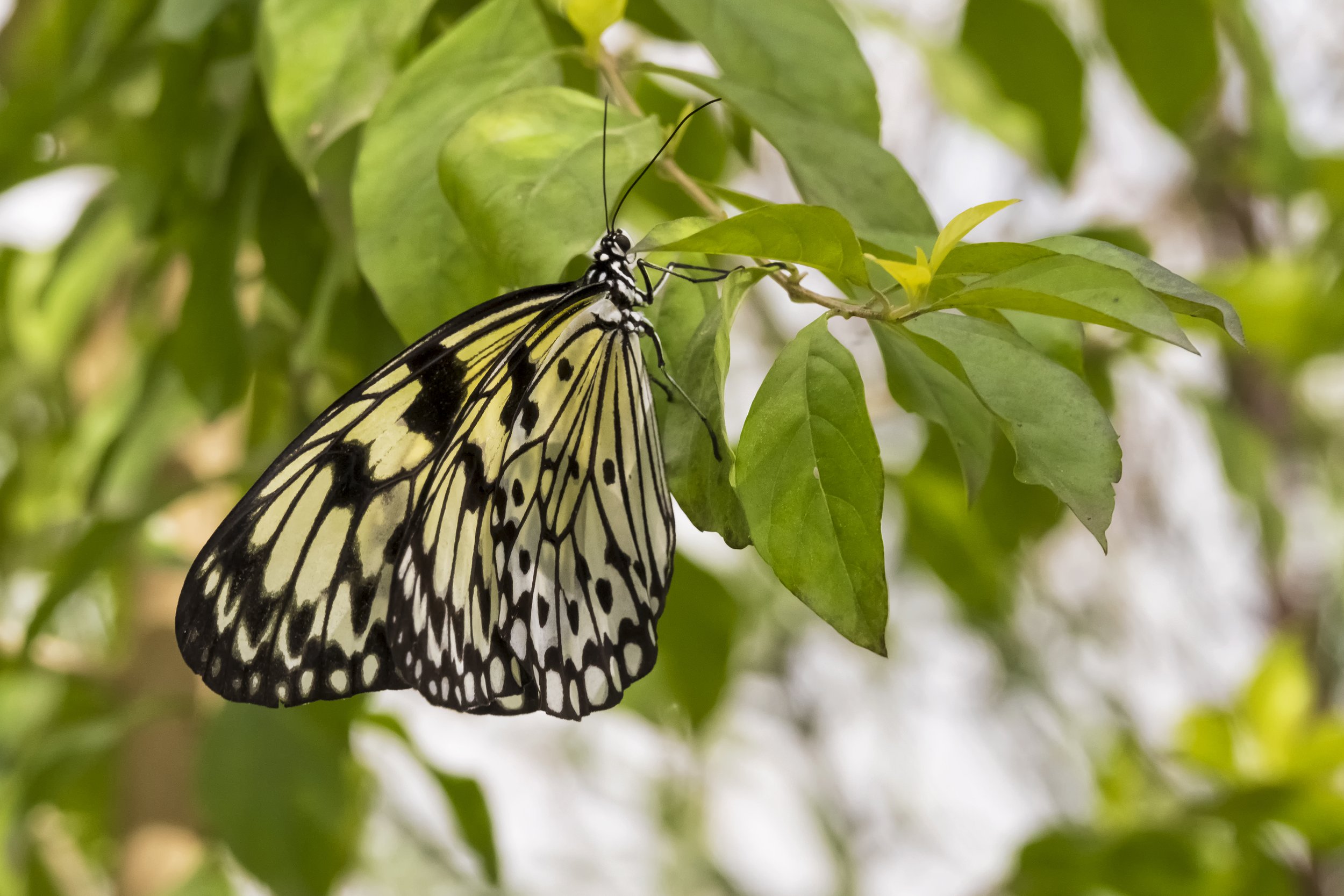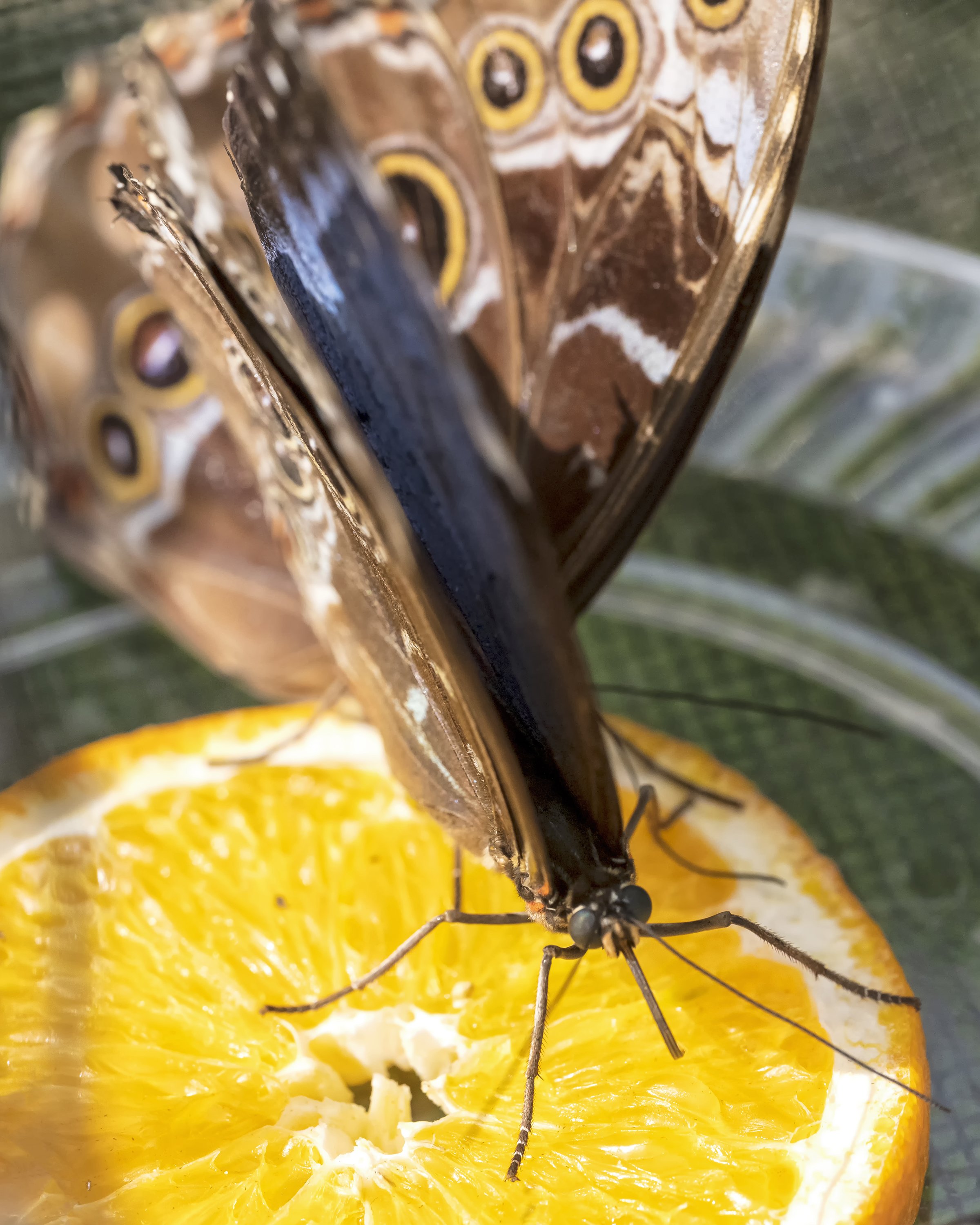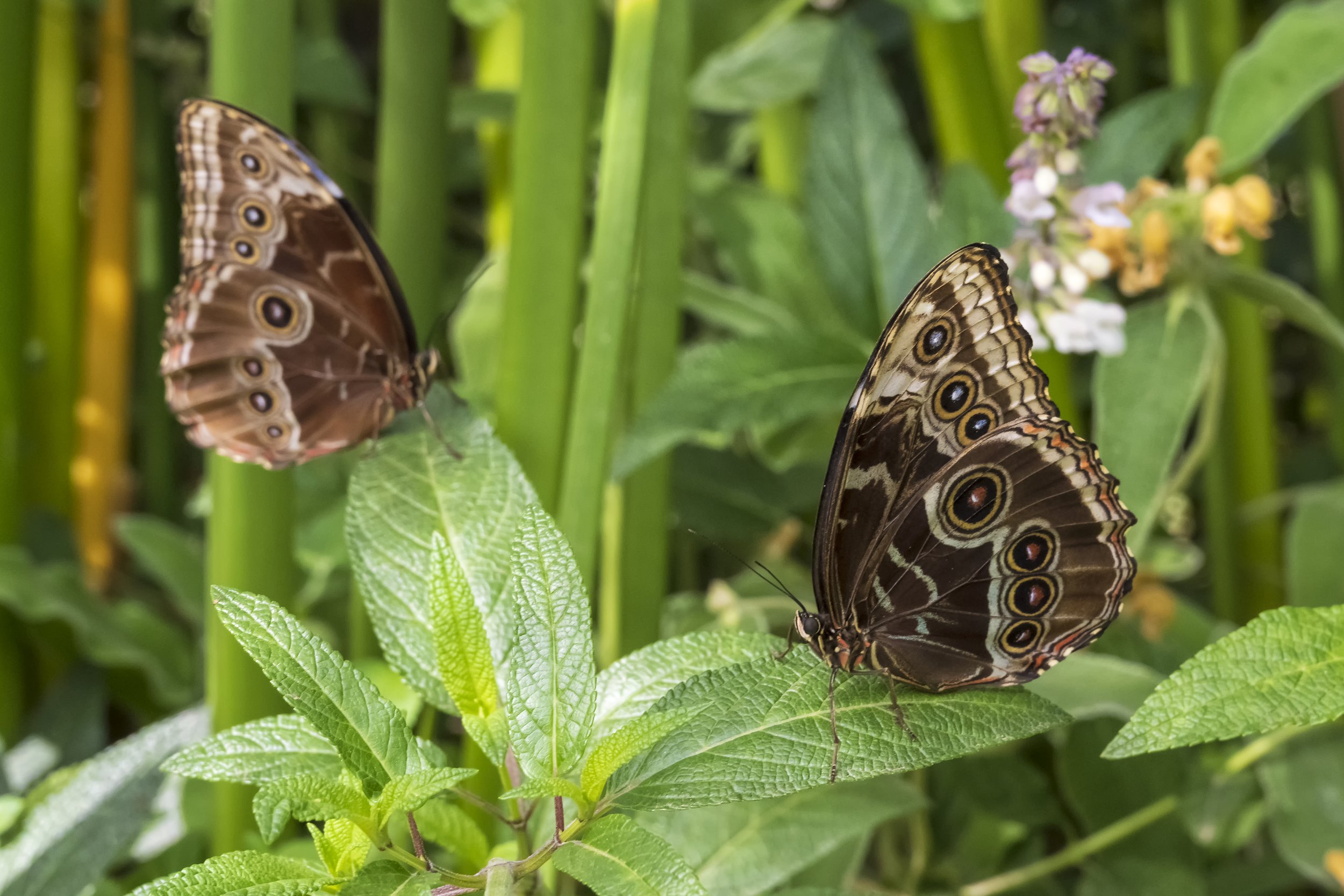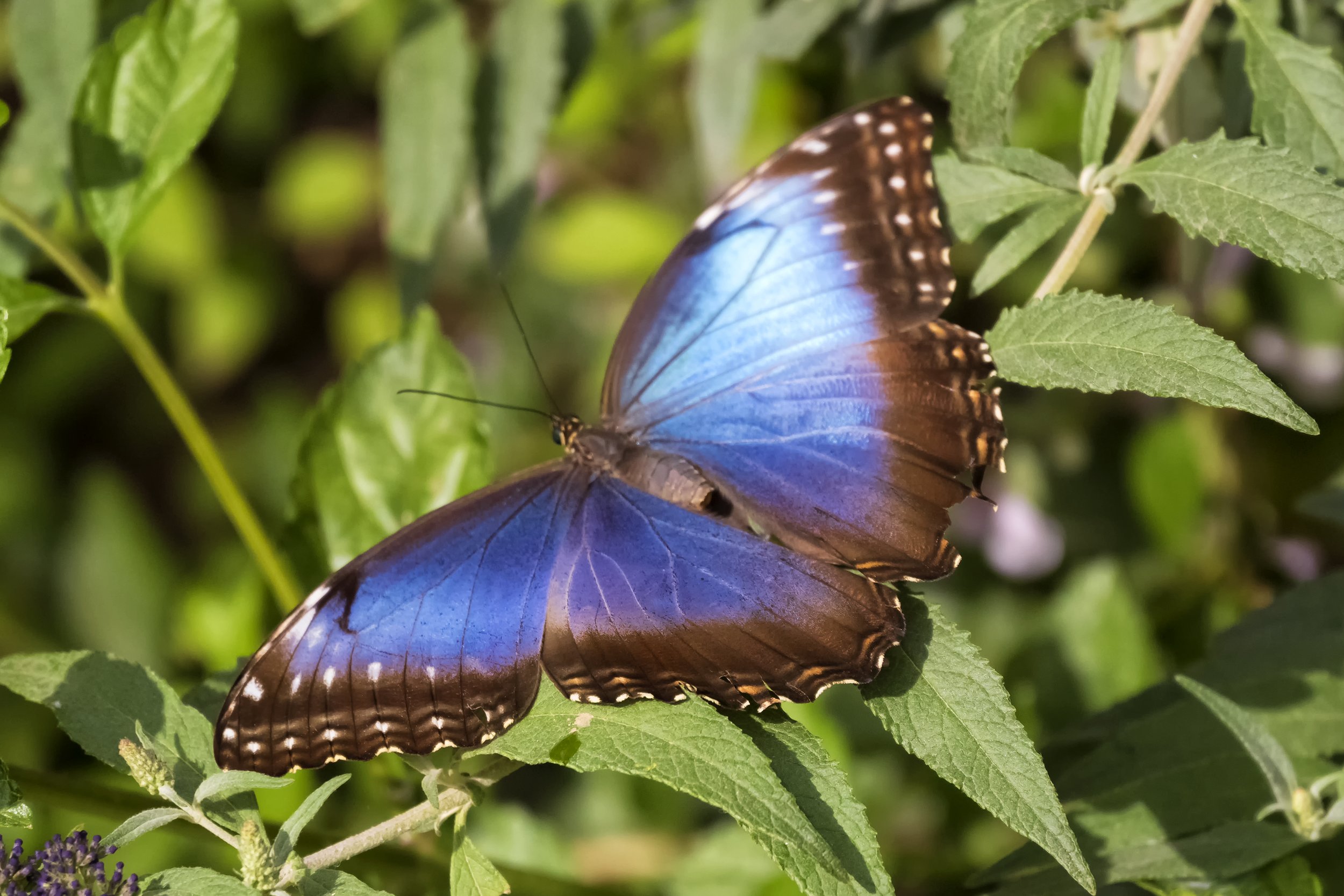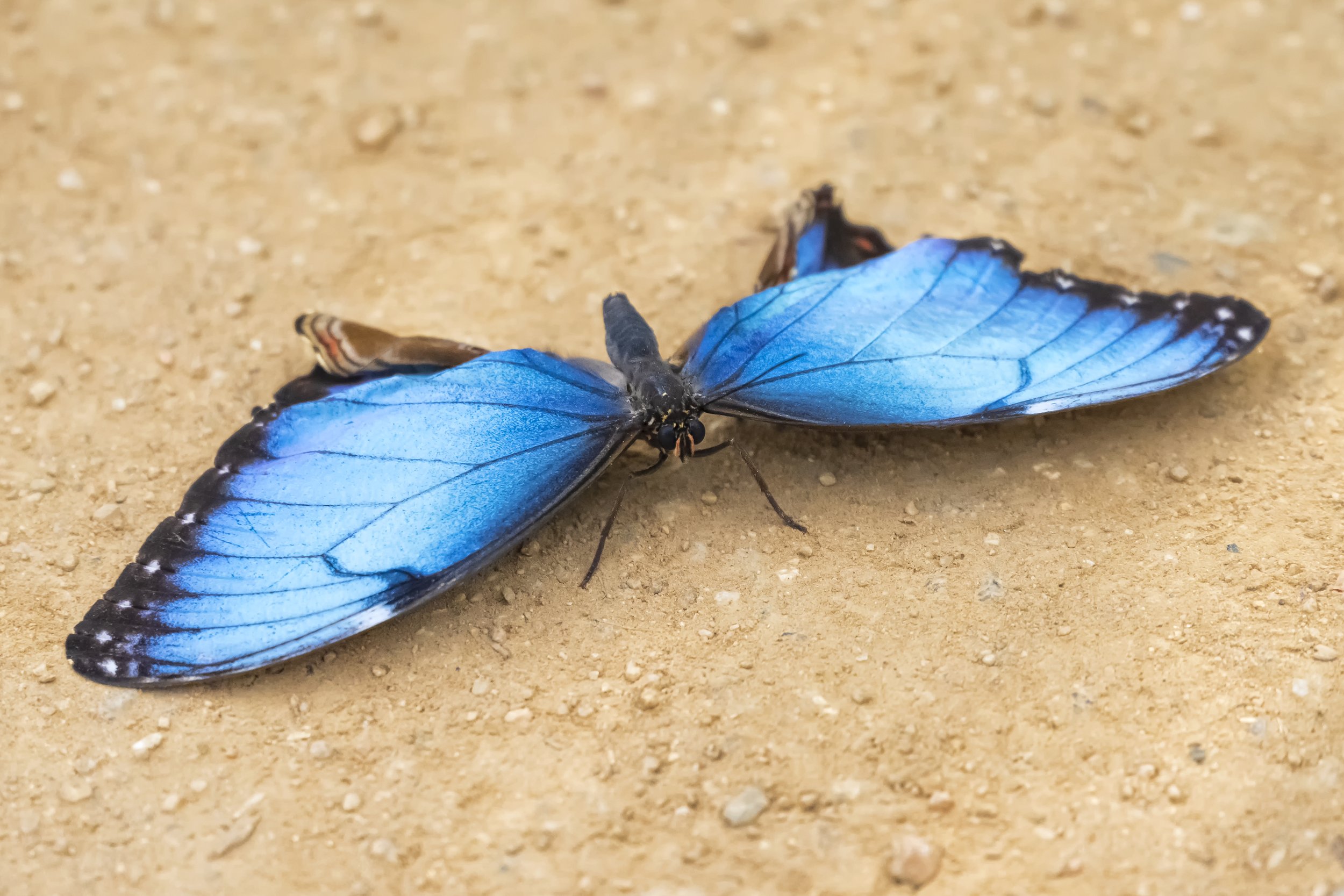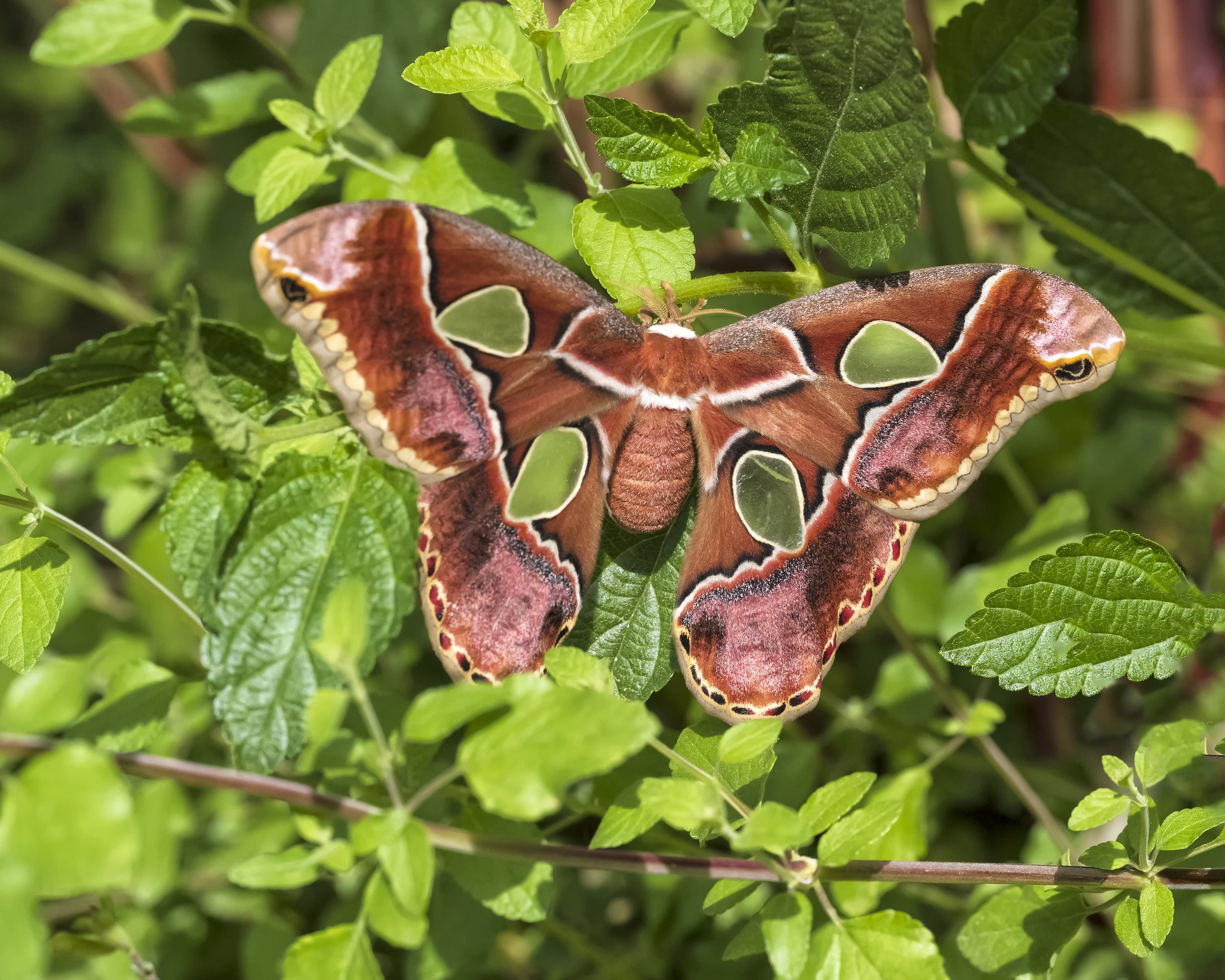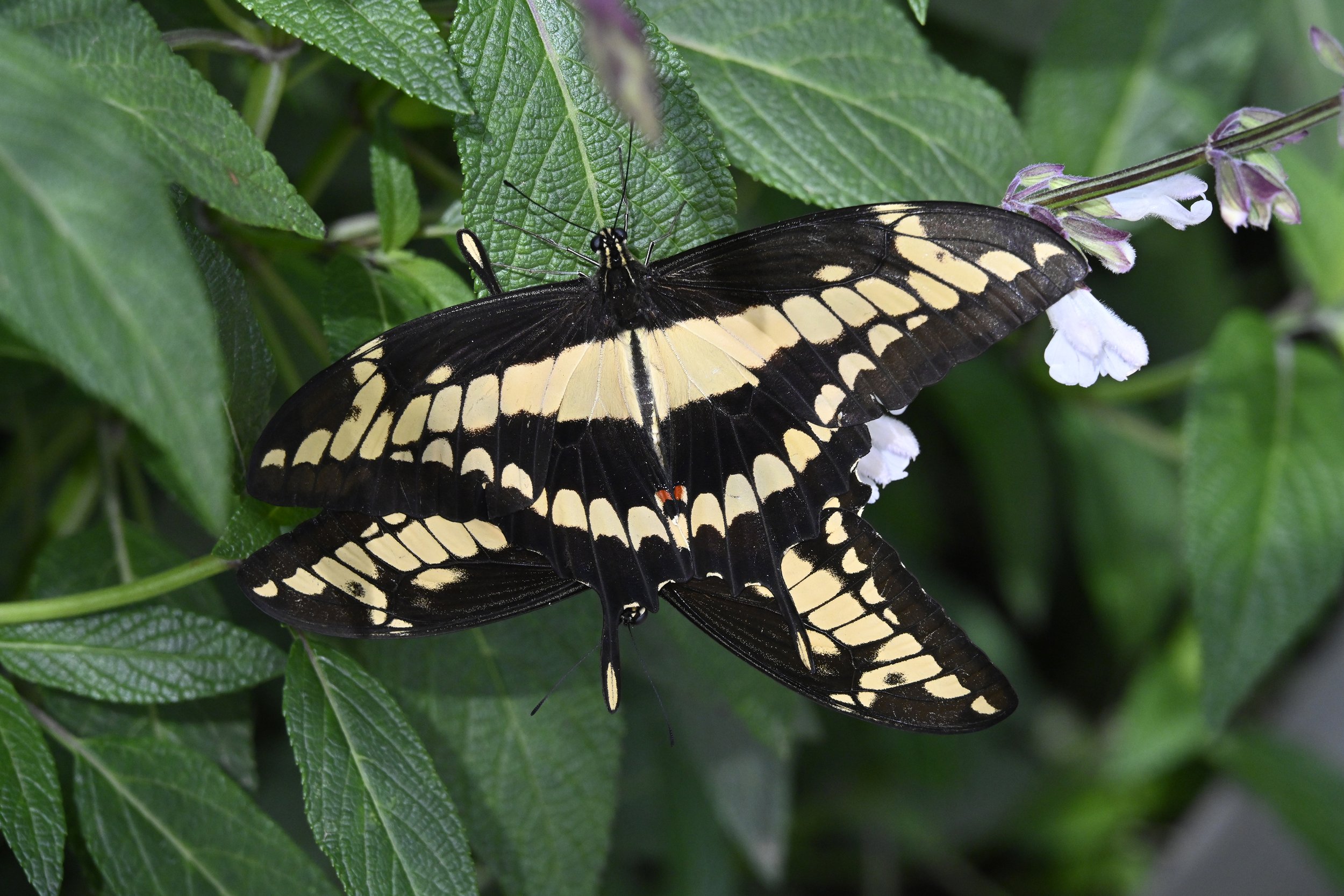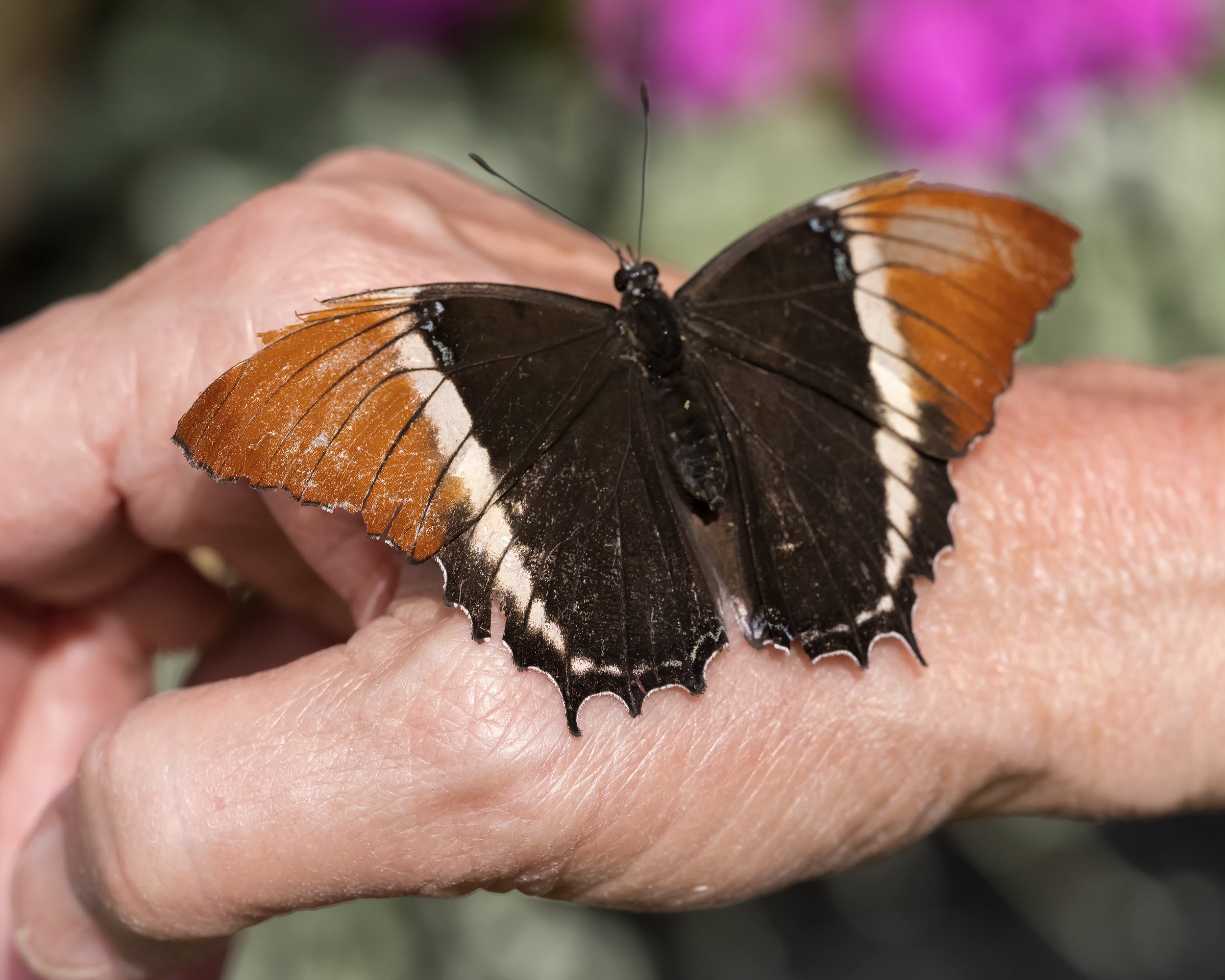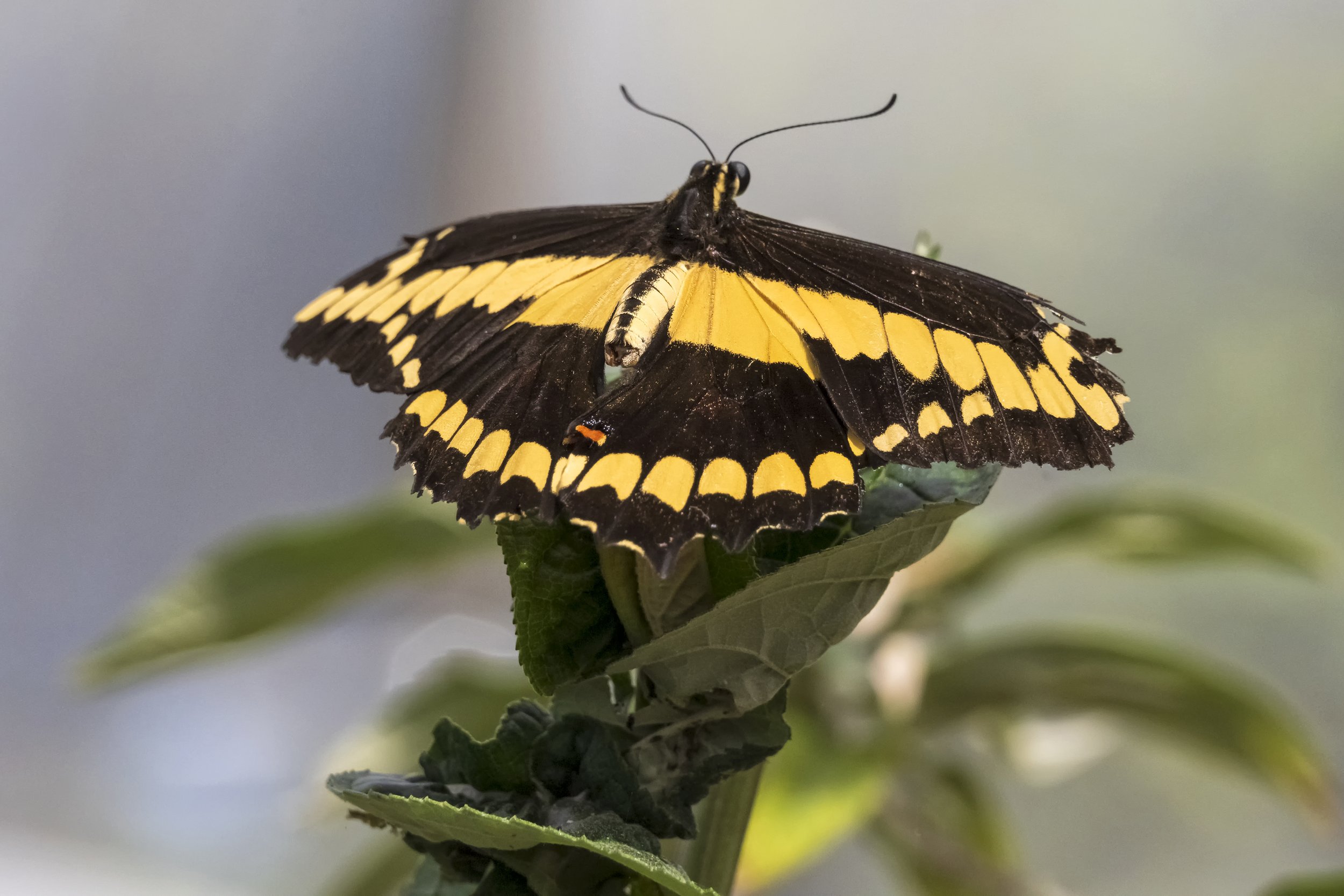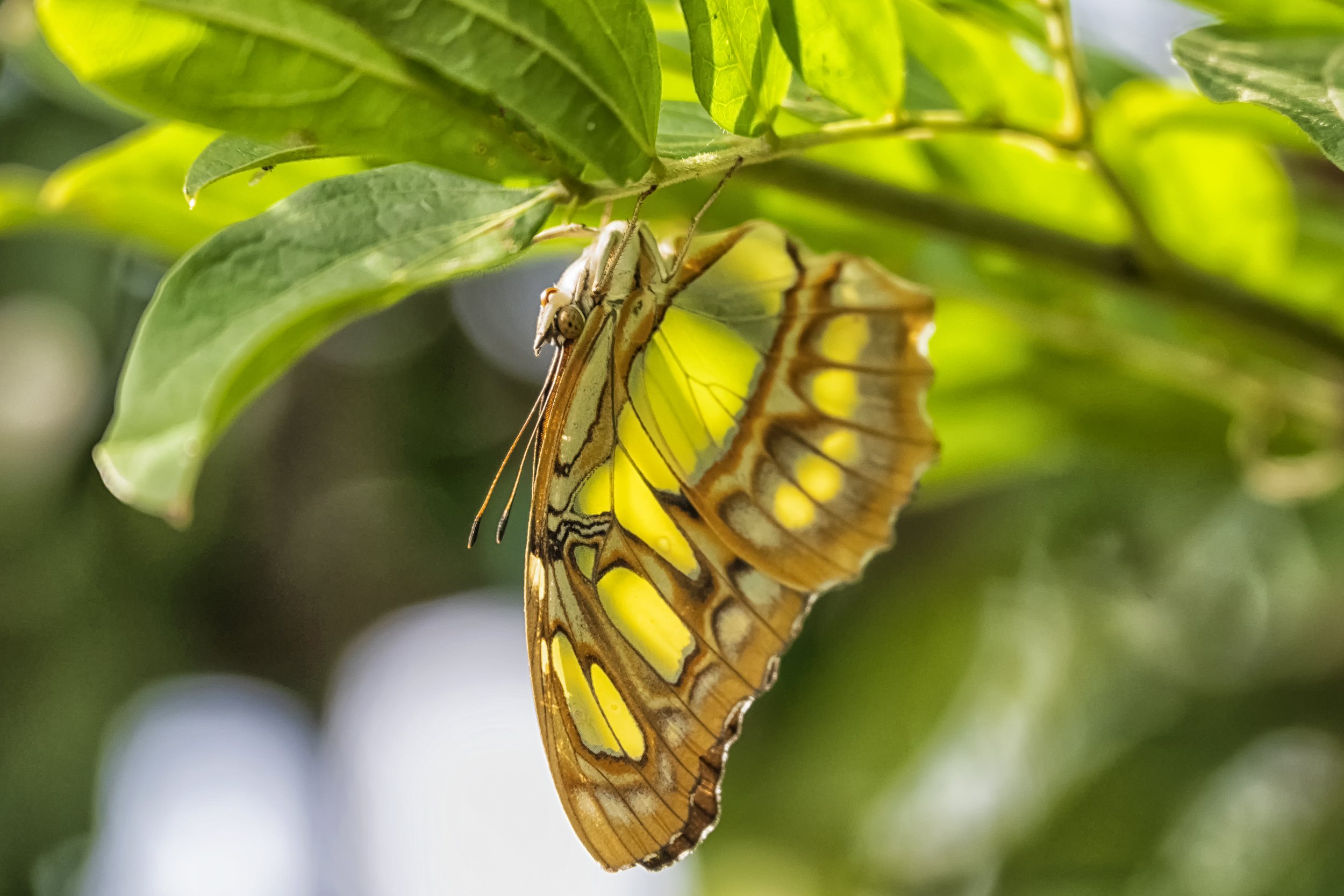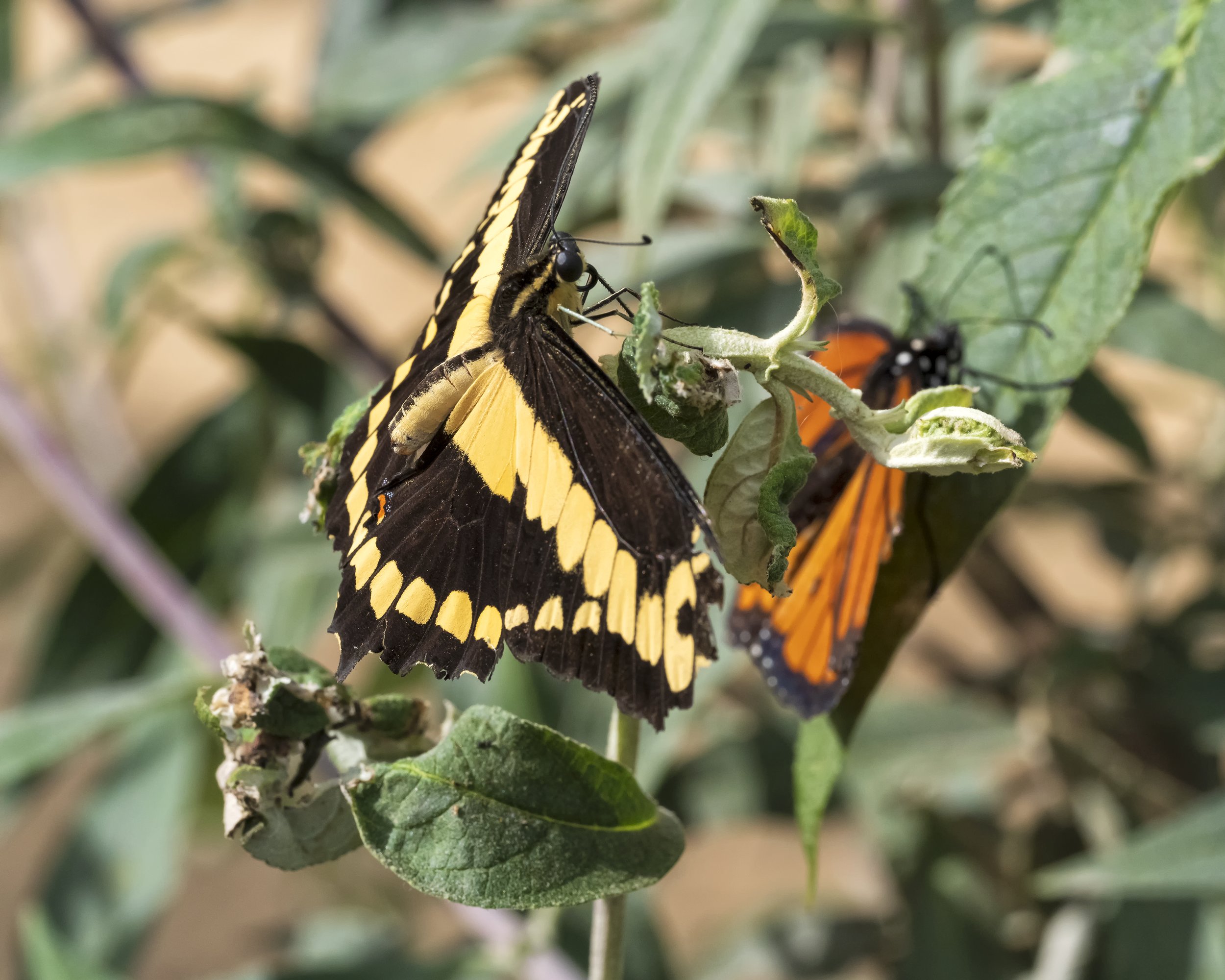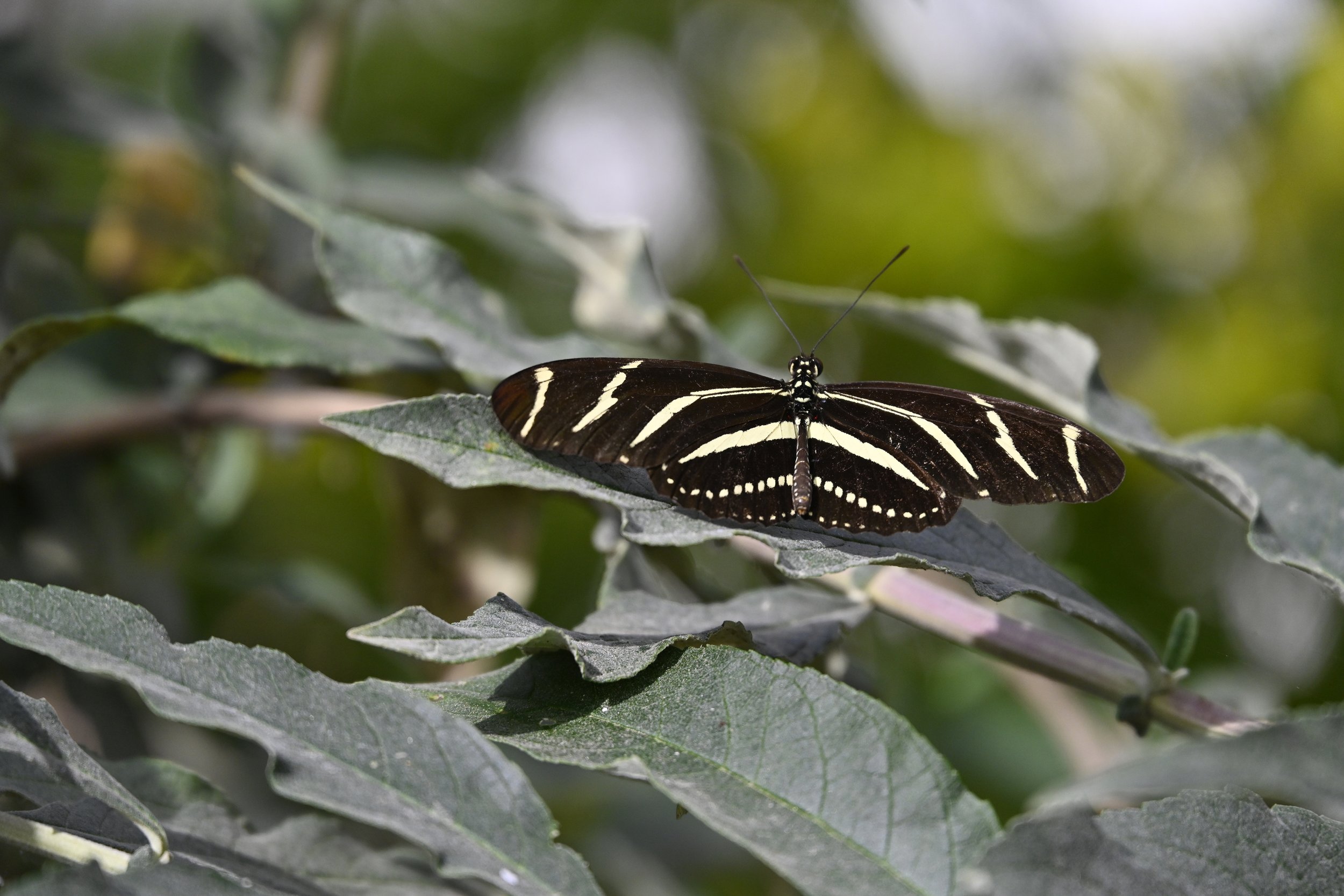SOAR Returns to the South Coast Botanic Garden By Photographer, Contributor Steve Tabor
SOAR Returns to the South Coast Botanic Garden
By Photographer, Contributor Steve Tabor
As a way to highlight the vital role these tiny, fragile and often colorful creatures play in monitoring and maintaining our environment, the South Coast Botanic Garden (Garden) opened its second Spring edition of SOAR.
Butterflies and other pollinators are like a canary in the coal mine for our environment. A lack of pollinators signals that significant negative changes in the environment may have occurred. An abundant presence pollinators is a sign of a healthy environment. Butterflies, hummingbirds and bees are critical to establish and maintain the presence of flowers and plants that serve as the building blocks for larger plants, trees and animals that maintain nature’s balance.
Brush Foot
Brush Foot
Brush Foot
Birdwing
According to Terry Huang, the Director of Living Exhibits, Learning and Education at the Garden, “Biomimetics scientists are studying these the physical and environmental adaptations of these small creatures to resolve issues in our human world.” Huang points to studies involving morpho butterflies regarding heat reducing paint, security measures and other topics. Glasswing butterflies are being used in glaucoma research.
The average life span of the butterflies are two to three weeks, but if they are in exceptional health, they can live as long as one month. The Garden receives weekly shipments of chrysalises which maintains a steady flow of butterflies throughout the run of the exhibit.
Brush Foot
Brush Foot
Brush Foot
Brush Foot
Huang points out, “There are about 190 species that could be exhibited before the conclusion of the SOAR exhibit at the end of July. What is exciting is that we get new shipments every week, and we never know exactly what we are getting!”
This year’s exhibit has two new additions that were not previously available to the Garden: the common birdwing butterfly and the glasswing butterfly. Huang suggests, “The birdwing is far from common. They are native to Southeast Asia and Australasia. Their most fascinating trait is their large wingspan, which is the largest wingspan of all butterflies.” It receives its name from its wing movements that mimic a bird’s wings during flight.
The glasswing butterfly has transparent wings making it nearly invisible and very difficult for visitors, and more importantly, predators to find it. To spot them in the exhibit, Huang suggests, “They hang out in shady corners of the exhibit. They are not easy to see, so have patience and look carefully.”
Glasswing
Glasswing
The butterflies on exhibit are raised on farms in Florida, Texas, and Costa Rica. Each week, the Garden seeks to maintain a butterfly population between 300 to 500 butterflies on exhibit. At any one time, between 20 to 30 species are represented. Among the butterfly species displayed are: morpho butterflies (common blue morpho and Granada morpho), swallowtail butterflies (king swallowtail, giant swallowtail, and ruby-spotted swallowtail), owl butterflies (forest giant owl, giant owl, and yellow-edged giant owl), longwing butterflies (zebra longwing, Doris longwing, and Julia longwing), brush-footed butterflies (glasswing, malachite, rusty-tipped page, blue-frosted banner, blue wave, and monarch), and sulfur butterflies (cloudless Sulphur).
Morpho
Morpho
The Morpho butterflies are noted for their iridescent blue wings. The azure shimmering wings are created by diamond-shaped chitin nanoscales that serve as small refractors for the white light coming from above. The more intense the light, the brighter the blue appears across the surface of the wings.
The underside of their wings serves as camouflage for this dazzling creature. When the Morpho folds its wings up, the patterns created from various shades of brown allows the insect to blend into background of the bark and leaves in the rainforests of Central America and South America, including the Amazon Delta.
Additionally, the extreme contrast in the wings’ coloring makes it exceedingly challenging for predators to follow the butterfly in flight. Against the dark canopy of the trees with windows of bright sunlight in the rainforest, a predators may briefly spot the bright flash of blue. Just as quickly, those bright wings seem to disappear as the wings fold up and only expose the dark brown underside which merges with the canopy above.
Morphos express a sexual dimorphism between genders. Males have bright blue wings, females’ wings are primarily brown or yellow, but can be a pale blue. Also, it is believed that this color variation makes the females less visible when they lay their eggs.
Some pilots note that when flying above the concentrated populations of Morphos inhabiting the rainforests their reflective blue wings can be easily located from above.
Unlike other butterflies, the Morphos’ diet mainly consists of juices from fresh or rotten fruit. Morphos will also feast on tree sap and fungi found in the flesh of decomposing animals.
In their caterpillar state they ingest plants containing various toxins. These toxins remain in their systems throughout their lives. This serves as a natural defense system against many predators except for some species of birds which can ingest the same toxins.
Longwing
Longwing butterflies are found in the southern United States, Mexico, Central America, and South America. They feed on the nectar and pollen from a variety of plants. It is believed that ingesting pollen can extend the life span of the butterfly from a few weeks to several months.
The Birdwing is the largest member of the Swallowtail family. They are found across the world, but are most common in warmer regions. Like the Morphos, while in their caterpillar state they ingest poisonous plants which serves as a natural defense system throughout their lives. Additionally, their color pattern allows them to mimic the appearance of plants that are of no interest to predators.
Found in the rainforest and secondary forests in Mexico, Central America, and South America, Owl butterflies are known for a large dark circle on each wing. The marking serves as a form of disguise for the insect because of its resemblance to a lizard or an amphibian. Unlike most butterflies, Owl butterflies commonly fly at dusk.
There are approximately 6,000 species of Brush-footed butterflies, also known as Four-footed butterflies. They only use four of their six legs for standing or walking. The third pair of legs do not extend and remain close to the insect’s torso. Females have shorter forelegs than their male counterparts. Both use their forelegs to intensify their sense of smell.
Their brightly colored wings with multiple spots and a black body are a trademark of this family of butterflies. Common wing colors include black, brown, blue, red, yellow, and orange.
Brush-footed butterflies tend to be loners and live on flowering plants. Their range encompasses southern Canada to southern Mexico.
In addition to the larger selection of butterflies, the Garden has renovated its gardens inside the Butterfly Pavilion and its Host and Nectar Garden. Huang points out, “One of our main goals is to provide more nectar sources for our tropical and native butterflies. Not only have we updated and refreshed our plantings in the Pavilion, but we have added more plants to our Host and Nectar Garden for our local butterfly exhibits. As we continue to update and refresh the plantings in the Host and Nectar Garden, we have noticed more butterfly visitations. The combination of good nectar sources and host plants really draw butterflies in.”
Flowers that are flat and open are butterfly friendly and attract pollinators. Fluffy and puffy flowers make it difficult for the butterflies to access the nectar are less than ideal for these creatures.
One of the featured plants in the Host and Nectar Garden is narrowleaf milkweed. The milkweed is native to Palos Verdes and is perfectly suited to for the Western Monarch Butterfly populations. The plant is an excellent food source and helps the butterfly shed harmful parasites.
SOAR runs through July 31st, and is open seven days a week from 9:30 a.m. to 4:30 p.m. Tickets for SOAR are not included with Garden’s general admission tickets. Tickets for the Garden and SOAR must be purchased online in advance of your visit. Visitors are allowed 30 minutes inside the pavilion. Huang suggests, “Visitors should arrive 10 to 15 minutes early to ensure visitors have the full 30 minutes to enjoy the pavilion and tour the Host and Nectar Garden prior to their visit.”
The butterflies are most active during the warmer weather. For a close-up encounter, Huang recommends that visitors come during the cooler parts of the day. Visitors wishing to see the butterflies in a more active state should visit during the warmer times of the day.
The Garden, located at 26300 Crenshaw Blvd. in Palos Verdes Estates, is open from 8:00 a.m. to 5:00 p.m. daily. Advanced reservations are required for non-members Monday through Sunday. Members must reserve their SOAR tickets in advance, but they are not required to make reservations to visit the Garden Monday through Friday. For information about tickets and visits to Soar and the Garden, please visit: https://southcoastbotanicgarden.org/
Steve Tabor Bio
This South Bay native’s photographic journey began after receiving his first 35 mm film camera upon earning his Bachelor of Arts degree. Steve began with photographing coastal landscapes and marine life. As a classroom teacher he used photography to share the world and his experiences with his students. Steve has expanded his photographic talents to include portraits and group photography, special event photography as well as live performance and athletics. Steve serves as a volunteer ranger for the Catalina Island Conservancy and uses this opportunity to document the flora and fauna of the island’s interior as well as photograph special events and activities.
Watch for Steve Tabor Images on the Worldwide Web.




